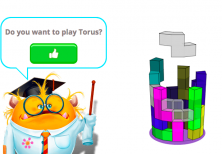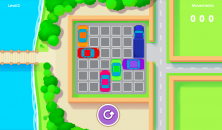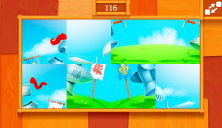Reasoning and Mathematics
Reasoning is a fundamental component of intelligence. It is the capacity to adapt and confront new situations in a flexible way. In the field of mathematics and science, it has been seen that it plays an important role, in particular visuospatial. (Nath & Szücs, 2014; Wai, Lubinski, & Benbow, 2009). In other words, children with visuospatial reasoning skills have more facilities in developing their mathematics skills.
And if visuospatial reasoning skills are not your strong point? No problem! Various cognitive training studies show that these skills can be trained with activities like the reasoning games that can be found on SmartickBrain. For example, Lowrie and some colleagues in Canberra, Australia recently evaluated the effectiveness of an intervention program centered on spatial reasoning in elementary school students. This training program was a success showing significant improvements in visuospatial reasoning skills and mathematical performance.
SmartickBrain Reasoning Games
At the end of their daily Smartick session, children have the possibility to train their spatial reasoning skills in the Virtual World. We are going to look at some of the games that they can play in SmartickBrain to reinforce this important cognitive ability.
Torus

This is a classic mental rotation (a central component of reasoning) and spatial organization game. In this activity, they have to fill the spaces by forming complete rows and making them disappear. Children can use the arrow keys to move the pieces left or right, rotate them, and make them fall faster. They need to think things through and the more rows that they complete and make disappear, the more points they get.
Rush Hour

This game requires reasoning and spatial organization skills to get a car out of the parking lot. The fewer movements they make, the more points they will earn. This activity requires strategic planning and selection in order to reach the correct solution.
Puzzle

For this game, children have to organize and correctly place the pieces of the image to create the picture. Reasoning, attention, and visuospatial organization are necessary skills to complete the activity. Sometimes they will need to click on the pieces to change their position and complete the puzzle in a maximum time of 120 seconds. Other times, the game will require mental rotation skills and they will need to click on the pieces to rotate them and complete the puzzle in a maximum time of 150 seconds.
If you would like to improve your child’s cognitive abilities sign up with Smartick today and, after their 15-minute session, they can practice with these and many other reasoning games.
References:
- Lowrie, T., Logan, T., Harris, D., & Hegarty, M. (2018). The impact of an intervention program on students’ spatial reasoning: student engagement through mathematics-enhanced learning activities. Cognitive research: principles and implications, 3(1), 50.
- Nath, S., & Szücs, D. (2014). Construction play and cognitive skills associated with the development of mathematical abilities in 7-year-old children. Learning and Instruction, 32, 73-80.
- Wai, J., Lubinski, D., & Benbow, C. P. (2009). Spatial ability for STEM domains: Aligning over 50 years of cumulative psychological knowledge solidifies its importance. Journal of Educational Psychology, 101(4), 817.
Learn More:
- Educational Games on SmartickBrain, Essential for Learning
- Cognitive Flexibility Games with SmartickBrain
- Lost Objects: The New SmartickBrain Game to Train Attention
- Exercising Memory with SmartickBrain Games
- Attention and Learning with SmartickBrain
- Mistakes: An Opportunity to Learn - 05/07/2020
- The Importance of Positive Reinforcement in Education - 04/02/2020
- Is It True That Boys Are Better at Math Than Girls? - 03/05/2020







